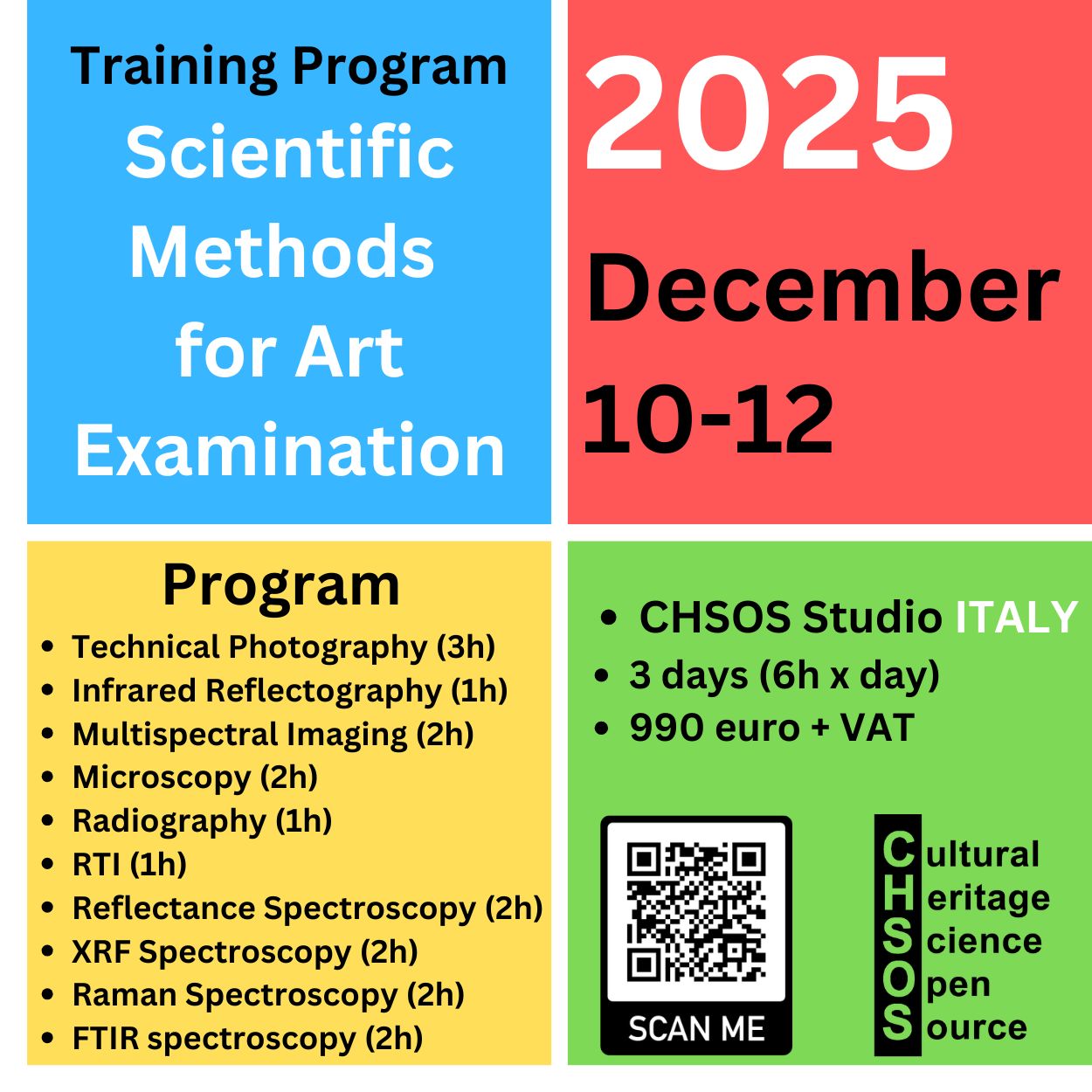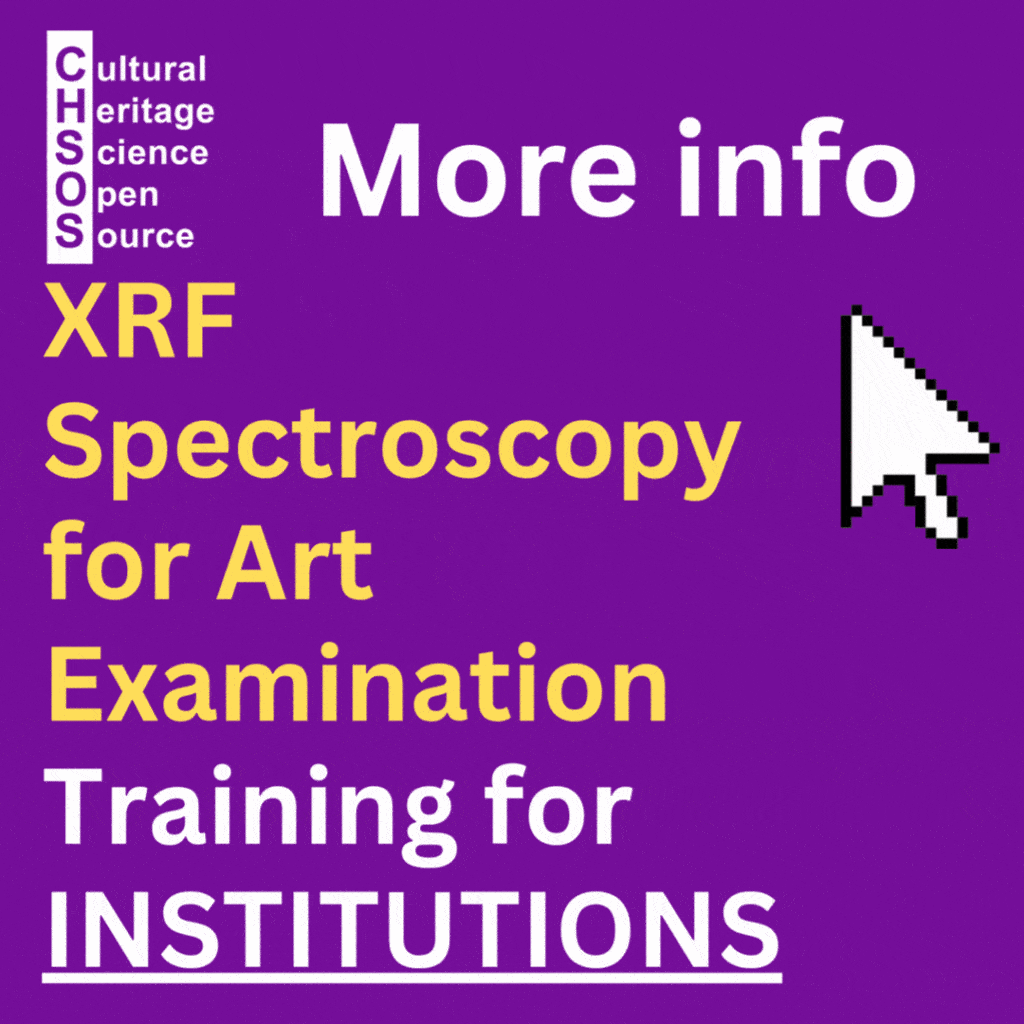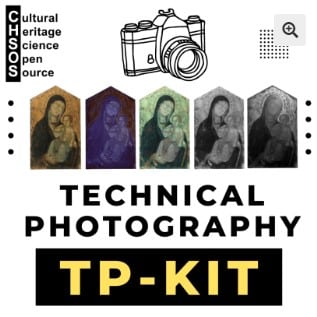Home » Test Artifacts » Technical Photography – faded paint
Task 1: faded paint
The Test Artifact Task 1 features three paints prepared with malachite, lead–tin yellow type I, and yellow ochre, all bound with gum arabic. These paints were intentionally made with a very low pigment concentration, resulting in swatches that are barely visible in standard visible-light photography. Their appearance simulates the effect of naturally faded paints.
The goal of this task is to apply imaging methods that can enhance the visibility of these faint swatches.
CHSOS Test Artifacts – item #1

Technical Photography
We can test technical photography to determine which of its photographic imaging method works best for this task. Reflected UV (UVR) is the most effective approach because most pigments absorb strongly in the ultraviolet range. As a result, UVR typically produces higher contrast, showing dark pigments against the bright reflective surface of the cardboard.
This method is particularly successful with lead–tin yellow, which appears the most faded in the visible image. Conversely, other imaging methods such as IR and IR+ (using the LIBERO filter) do not improve visibility, as expected, because the pigments become even more transparent in the infrared region.

While we could consider more advanced imaging approaches, such as multispectral imaging, the advantages of Technical Photography (TP) for this task are clear:
TP allows us to photograph and process a large number of items quickly — an essential feature when working with extensive objects such as multi-page illuminated manuscripts. The image editing required from the operator is also straightforward.
More complex techniques, like multispectral imaging, demand highly specialized equipment and personnel with advanced training, making them less practical for routine or high-volume documentation.








